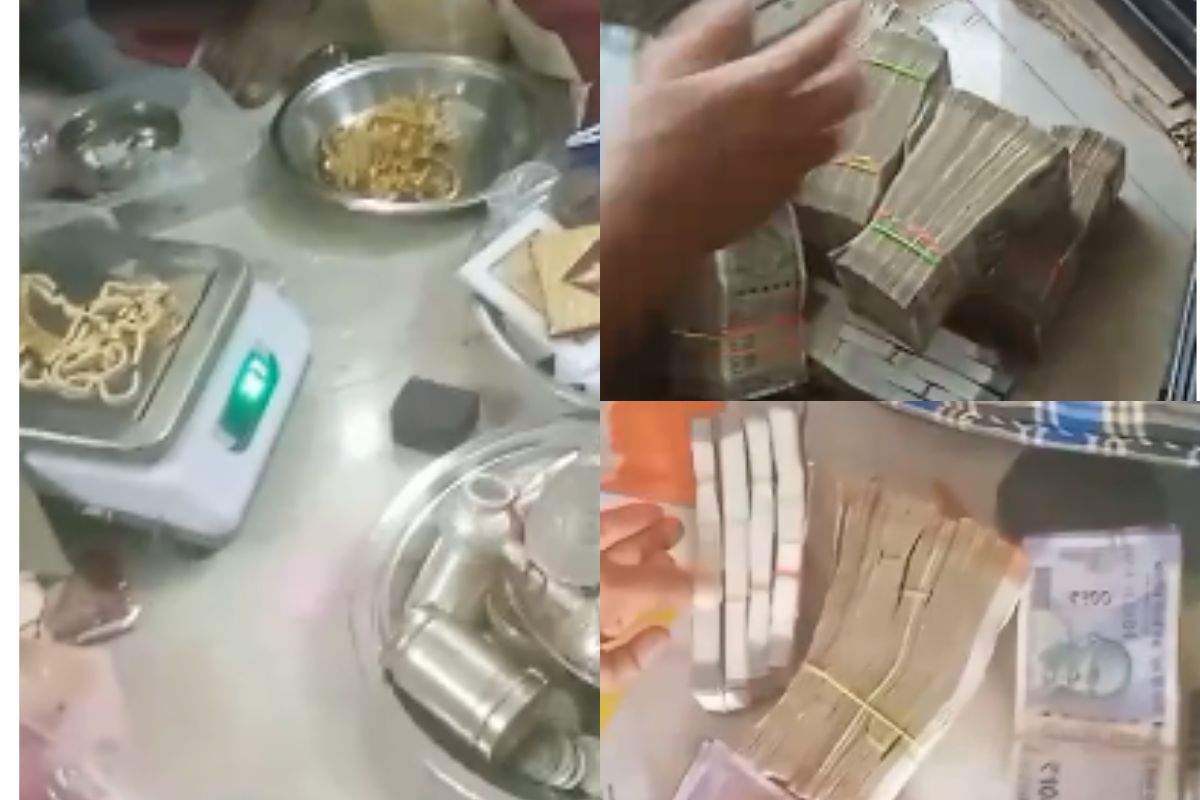Jaipur : Jaipur pollution is suffocating. The AQI in Jaipur stood at 269 while the poor air quality was recorded above 300 in Ganganagar, Sikar and Bhiwadi. Old vehicles are also the biggest reason for increasing pollution. There are 1.40 crore vehicles in the state. Of these, only 23 lakh vehicles get tested for pollution every year. Of these, 90 thousand vehicles have failed in the test. Surprisingly, no action has been taken against these 90 thousand vehicles. The situation is that in January, PUC inspection of only 210 vehicles was done in the state. PUC inspection of 300691 vehicles was conducted in July. In November, this figure reduced to 176915. It is noteworthy that due to increasing pollution, Delhi government has completely banned the operation of 10 year old diesel and 15 year old petrol vehicles eight years ago, whereas in Rajasthan, operation of old vehicles has been banned. But there is no restriction of any kind. After 15 years, RC gets renewed. However, in Rajasthan, there is a ban on operation of commercial vehicles older than 10 years in Alwar and Bharatpur districts and 15 years in Jaipur, Jodhpur, Udaipur and Kota. This year, the Transport Department has banned commercial and domestic diesel vehicles older than 10 years in Alwar and Bharatpur districts.
These districts of the state remain in the red zone
According to the report of the Central Pollution Control Board, the air quality index level in Jaipur, Ganganagar, Sikar, Bhiwadi (Khairthal) has crossed 300 on November 20, which comes in the red zone category. The highest air quality index level was recorded at 342 in Bhiwadi. The air quality index level was recorded at 325 in Jaipur, 305 in Ganganagar and 310 in Sikar. Here, the air quality index level is also deteriorating in the areas of Churu and Jhunjhunu. Air quality index level of 228 has been recorded in Churu and 226 in Jhunjhunu. These cities have come under the Orange Zone category.
Most pollution from diesel vehicles
According to a report, diesel vehicles generate more carbon dioxide than petrol vehicles. Apart from this, NOx and PM particles also increase. One diesel vehicle emits as much pollution as 24 petrol vehicles and 40 CNG vehicles. For example, the NOx figure in BS4 vehicle petrol variant is 0.08 g/km. At the same time, in diesel this figure is 212 percent more i.e. 0.25 percent.
Although diesel vehicles emit less carbon monoxide than petrol, they emit more PM and HC+NOx. Diesel vehicles emit more nitrogen oxide (NOx), particulate matter (PM) and carbon dioxide (CO2) than petrol vehicles. This works to increase pollution.
“Under Operation Kavach, action will now be taken against vehicles without pollution and fitness. Even if there is no improvement, the vehicles will be seized.”
-Rajendra Shekhawat, RTO First
There is more news…
Pollution is suffocating. The AQI in Jaipur stood at 269 while the poor air quality was recorded above 300 in Ganganagar, Sikar and Bhiwadi. Old vehicles are also the biggest reason for increasing pollution. There are 1.40 crore vehicles in the state. Of these, only 23 lakh vehicles get tested for pollution every year. Of these, 90 thousand vehicles have failed in the test. Surprisingly, no action has been taken against these 90 thousand vehicles. The situation is that in January, PUC inspection of only 210 vehicles was done in the state. PUC inspection of 300691 vehicles was conducted in July. In November, this figure came down to 176915. It is noteworthy that due to increasing pollution, Delhi government had completely banned the operation of 10 year old diesel and 15 year old petrol vehicles eight years ago, whereas in Rajasthan, operation of old vehicles has been banned. But there is no restriction of any kind.
After 15 years, RC gets renewed. However, in Rajasthan, there is a ban on operation of commercial vehicles older than 10 years in Alwar and Bharatpur districts and 15 years in Jaipur, Jodhpur, Udaipur and Kota. This year, the Transport Department has banned commercial and domestic diesel vehicles older than 10 years in Alwar and Bharatpur districts.
These districts of the state remain in the red zone
According to the report of the Central Pollution Control Board, the air quality index level in Jaipur, Ganganagar, Sikar, Bhiwadi (Khairthal) has crossed 300 on November 20, which comes in the red zone category. The highest air quality index level was recorded at 342 in Bhiwadi. The air quality index level was recorded at 325 in Jaipur, 305 in Ganganagar and 310 in Sikar. Here, the air quality index level is also deteriorating in the areas of Churu and Jhunjhunu. Air quality index level of 228 has been recorded in Churu and 226 in Jhunjhunu. These cities have come under the Orange Zone category.
Most pollution from diesel vehicles
According to a report, diesel vehicles generate more carbon dioxide than petrol. Apart from this, NOx and PM particles also increase. One diesel vehicle emits as much pollution as 24 petrol vehicles and 40 CNG vehicles. For example, the NOx figure in BS4 vehicle petrol variant is 0.08 g/km. At the same time, in diesel this figure is 212 percent more i.e. 0.25 percent.
Although diesel vehicles emit less carbon monoxide than petrol, they emit more PM and HC+NOx. Diesel vehicles emit more nitrogen oxide (NOx), particulate matter (PM) and carbon dioxide (CO2) than petrol vehicles. These work to increase pollution. Under Operation Kavach, action will now be taken against vehicles without pollution and fitness. Despite this, if there is no improvement then the vehicles will be seized.”


